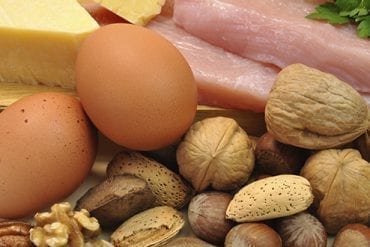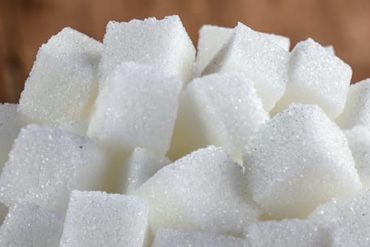A healthy diet will have a wide range of food groups in the correct proportions, and suitable portion sizes. Not everyone will be able to eat the same foods, for allergy or taste reasons, so it is important to find what works best for you individually, and adhere to it as best you can.
The Eatwell Guide
The Eatwell Guide divides up the five different food groups, to show you what you should try to eat to maintain a healthy diet. It explains that you should include fruit and vegetables, protein, fats and sugars, carbohydrates and dairy in your diet, to ensure you receive suitable amounts of the macronutrients and micronutrients that you need for good health.
Fruit and vegetables
Fruit and vegetables are excellent sources of essential vitamins and minerals which cannot be produced by the body and need to be taken in through the diet. These nutrients are needed in small amounts for your body to work properly. Fruit and veg also contain plenty of fibre too, which is important for your digestive health.
Aim for a minimum of five portions of fruit and veg each day. These foods are generally low in calories but high in fibre, meaning you feel fuller for longer when you eat them, reducing the likelihood of you snacking on unhealthy foods and overeating each day.
Examples of fruit and vegetables include bananas, apples, pears, oranges, melon, carrots, green beans, broccoli, onion and cabbage. They can either be fresh, tinned, frozen, dried or juiced.
Protein
Proteins are essential for growth, and are seen as the building blocks of body tissue, as well as a source of fuel. They are polymer chains of amino acids, which are broken down in the stomach, into smaller polypeptide chains.
Sources of protein include meat, eggs, fish, beans, nuts, pulses and more. Lean cuts of meat are better choices than processed and red meat, such as bacon, sausages and ham. Try to have at least two portions of fish each week, with one of these being oily, which contains omega-3 fats.
Fats and sugars
Fat is a macronutrient which provides us with energy, but it can lead to weight gain if too much is consumed, and also raise your cholesterol levels. Unsaturated fats are better choices than saturated fats and trans fats, so try to consume avocados rather than cakes, for example, for a healthier heart.
Because the human body is unable to produce fatty acids, we need to consume fat, which is a source of essential fatty acids such as omega-3 and omega-6. Fatty acids are basically smaller units of fat, formed as a result of fat being broken down during the digestion process.
Cholesterol (also known as lipid) is a fatty substance. It’s primarily produced by the liver, and plays a vital role in the body functioning normally. Proteins carry cholesterol in your blood, and when they combine, they are known as lipoproteins.
Low-density lipoprotein (LDL) is known as ‘bad’ cholesterol, while high-density lipoprotein (HDL) is known as ‘good’ cholesterol. Having high levels of LDL cholesterol can result in the development of fatty deposits in the arteries, restricting blood flow to the brain and heart. Cholesterol levels can be measured with a blood test, and often there are no symptoms of high cholesterol.
Additionally, vitamins A, D and E are fat-soluble vitamins, meaning you need to consume fat to help them be absorbed by the body.
Examples of saturated fats include sausages, biscuits, cakes, lard, cheese, palm oil, fatty cuts of meat and more. Vegetable oil, rapeseed oil, sunflower oil, olive oil, some nuts and avocados are all examples of unsaturated fats.
Dairy
Dairy products are a great source of calcium and vitamins, and can also contain protein. They help ensure your bones and teeth stay strong and healthy, and calcium is easily absorbed by the body. Aim for a minimum of three servings of dairy foods each day.
Examples of dairy products include milk, yoghurt, cheese, fromage frais and more.
Carbohydrates
Carbs are sugars which come in two main forms. Simple carbs (or simple sugars) taste sweet, and break down quickly, as well as raising blood glucose levels quickly. Complex carbs (starch) take longer to break down and digest, and whole grain/high-fibre versions are the healthiest varieties to have, as they contain more fibre and nutrients generally. Aim to consume complex carbs rather than simple carbs.
Examples of carbohydrates include bread, cereal, pasta, potatoes, rice, pastry and many more foods.
Calories
The current Reference Intake (formerly known as Guideline Daily Amount, or Recommended Daily Allowance) suggests that men should take in a total of 2,500 calories each day, women should consume 2,000 calories, and children aged five to 10 years should have 1,800 calories, as part of a healthy diet.
Of course, everyone is different, with factors such as age, height, body mass, and activity levels playing a part in your calorific needs and BMR. If you rarely exercise, then you may need to suitably reduce the number of calories you consume each day. Conversely, if you are incredibly active, then you may need to increase your calorie intake to meet your energy needs.
Remember that drinks also contribute to your daily calorific intake, not just food.
Basal Metabolic Rate (BMR)
Your BMR is the amount of calories you would burn in 24 hours, if you were to remain in bed all day. Even when you are sleeping or sitting down, your body continues to burn calories. There are two formulae for calculating BMR, in kcal/24 hours.
Men: 66.47 + (13.7 x weight [kg]) + (5 x height [cm]) – (6.8 x age [years])
Women: 655 + (9.6 x weight [kg]) + (1.8 x height [cm]) – (4.7 x age [years])
The value you receive following this calculation is then entered into the Harris Benedict Formula, which attempts to determine the calorie intake required for you to maintain your current weight, based on your activity levels.
No/little exercise: BMR x 1.2 = Total calories needed
Light exercise (1-3 days/week): BMR x 1.375 = Total calories needed
Moderate exercise (3-5 days/week): BMR x 1.55 = Total calories needed
Very active (6-7 days/week): BMR x 1.725 = Total calories needed
Extra active (Very active and a physical job): BMR x 1.9 = Total calories needed
Food labels
The nutritional labels on food and drink contain information on the amount of calories, salt, fat, protein, carbs and more, that is contained in the packet. Nutritional information is provided per 100 grams of food, although it may also list the information for one portion – albeit this may not align with your own opinion of a suitable portion size.
Most pre-packaged food and drink also contains a few certain pieces of information on the front, with a green, amber and red colour coding system. If one section of the label is red, it means there is a high amount of it within the product. Amber means medium, while green means low.





